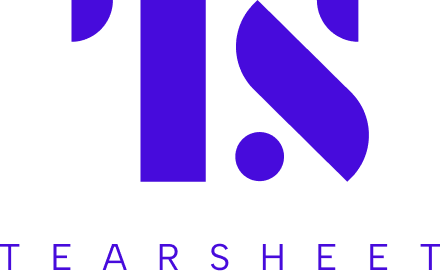KeyBank deepens its collaboration with Qolo, modeling how banks can build deeper fintech partnerships
- The KeyBank-Qolo alliance reflects an evolution in how banks and fintechs can co-create value through deeper integration.
- We break down their partnership mechanics and what makes it effective.

KeyBank and payments infrastructure provider Qolo forged a partnership in February 2023. With Qolo’s support, KeyBank added near real-time payments to its KeyVAM platform last year, making it available through both KeyBank’s platform and clients’ own systems. KeyVAM is the bank’s virtual account management platform.
Clients can access payments, reconciliation, and treasury services directly within their own software systems, eliminating the need to go through the bank’s interface and unlocking sub-accounting features typically unavailable through most banking portals.
Since its launch in March 2024, KeyVAM has processed over $9 billion in transactions as of June 2025.
This month also marked the next phase of KeyBank and Qolo’s partnership, as they introduced additional capabilities to the KeyVAM platform, followed by KeyBank’s announcement of a minority investment in Qolo.
The latest enhancements are designed to streamline financial operations even further, introducing same-day ACH reconciliation for faster processing, advanced dashboard reporting to visualize cash flow in real time, and simplified statement reporting that improves clarity across both primary and virtual sub-accounts.
The KeyBank-Qolo alliance reflects an evolution in how banks and fintechs can co-create value through deeper integration. We break down their partnership mechanics and what makes it effective.
The partnership model: This isn’t your usual ‘traditional bank-tech vendor’ setup
KeyBank’s working relationship with Qolo moves beyond the typical vendor setup, where clients are handed off-the-shelf solutions with little room for customization.
Both firms have skin in the game: What sets this partnership apart is the shared ability to co-build and influence the evolution of embedded banking infrastructure together, according to Bennie Pennington, Head of Embedded Banking at KeyBank.

An example of this dynamic emerged during the March 2023 banking crisis. Faced with shifting priorities, the KeyBank and Qolo teams jointly agreed to accelerate features related to interest calculation and distribution, originally scheduled for later release. Qolo welcomed the input and gave KeyBank the latitude to inform and adjust the roadmap, brainstorming with the KeyBank team to co-design enhancements that would make the additional features viable.
“Their partnership helped us develop features that were outside of the core requirements that we came up with on our own,” said Pennington. “As a result, we were able to capture some new clients that were looking for these services and get faster uptake with some of our newer features.”
This level of collaboration extends to the engineering floor as well, where KeyBank developers work directly with Qolo’s teams. Pennington noted that KeyBank’s operational depth — spanning the nuance of regulation, risk management, and customer workflow patterns — complements Qolo’s speed and technical flexibility, creating a joint capability greater than the sum of its parts.
Instead of focusing on quarter-to-quarter wins, the two firms are aligned around long-term infrastructure goals. “We’re making joint investments in infrastructure that neither of us could build as effectively alone,” Pennington added.
Foundational alignment: “True partnership means foundational alignment at the business model level, not just the technology level,” explained Diana Welch Howell, Head of Key Commercial Bank Alternative and Fintech Strategies at KeyBank. “Qolo’s success is directly tied to our success with embedded banking customers, which creates fundamentally different incentives than a traditional SaaS relationship.”

The partnership is designed to give Qolo an understanding of KeyBank’s business drivers, including customer acquisition costs, revenue streams, and market positioning. She emphasized that the focus isn’t on ideas that only look good in a demo. The two firms align on identifying and developing capabilities that meaningfully support customer retention and long-term value.
Cultural alignment: Equally as important to the success of this partnership is the culture, according to Howell. When KeyBank makes decisions about KeyVAM enhancements, Qolo’s product managers are in those rooms, understanding the “why” behind KeyBank’s priorities and working with them to determine how they can better serve customers.
“To put this partnership into a broader context, when we started investing in fintech back in 2014, the industry was fragmented,” noted Howell. “Banks and fintechs were largely operating in parallel universes. Fast forward to today, and you see a true ecosystem of integration.”
The underlying elements to make this relationship work: Technically, “the integration goes way deeper than APIs,” explained Pennington.
KeyBank’s core banking systems must connect smoothly with Qolo’s infrastructure, which handles transaction data but also sends near real-time updates on risk, compliance, and operational metrics, backed by redundant data flows.
It’s about building the kind of systems integration “most traditional vendor relationships aspire to but often fall short of,” noted Pennington.
To achieve this level of coordination, KeyBank has configured its integration so that Qolo can receive payment settlement requests directly from its ACH settlement platform. Likewise, Qolo can send origination requests straight to KeyBank’s ACH origination system on behalf of clients. “We do the same thing with wire and RTP payments, which allows all our Virtual Account Management payment rails to function in real time and for Qolo’s ledger and our reconciliation to stay in sync in real time,” Pennington noted.
On the cultural side, “the biggest lesson we learned early was about communication cadence,” he said. “Staying in regular communication and learning to speak each other’s language has helped us get to the point we’re at today.”
KeyBank’s Howell emphasized that for the KeyBank-Qolo collaboration to thrive, it was essential to move beyond conventional vendor oversight and embrace a genuine partnership approach. Procurement processes and contract terms typically govern vendor relationships, but partnerships demand a different skill set centered on relationship management.
“A key lesson that we’ve learned throughout the process: establish clear decision-making frameworks up front,” Howell said. “When you’re moving at fintech speed, you can’t have every decision go through traditional banking committee structures.”
Fintechs are built to move quickly and iterate rapidly, while banks often operate at a more deliberate pace, with different pressures and risk considerations. Bridging that gap has been key to making the partnership work.
“Consider creating partnership decision rights that allow some technical and product decisions to be made by designated team leads without full committee review, when appropriate,” she noted.
Aligning product development with business objectives: According to Howell, KeyBank’s prioritization framework for product development is filtered through three strategic lenses:
- Competitive differentiation
- Regulatory risk
- Scalability impact
KeyVam’s new enhancement, same-day ACH reconciliation, quickly rose to the top of KeyBank’s list because it checked all three boxes. Customers were experiencing operational friction with end-of-day settlement processes. KeyBank saw a gap in the market: real-time reconciliation wasn’t something the bank saw other competitors offering, and solving it meant creating infrastructure flexible enough to support multiple future use cases.
“Our broader strategy overall is about building embedded banking infrastructure that can support multiple products and investments rather than one-off ‘band-aid’ solutions,” said Howell. “Every feature we prioritize has to contribute to a platform that can multiply our current transaction volume.”
Pennington noted that KeyBank’s existing infrastructure investments have to be considered before taking on something new. “Any new product or partnership that we explore has to function and excel in conjunction with our current architecture,” he said.
He further explained that they look at all feature enhancements and infrastructure changes through the lens of “how does this make my client’s experience smoother or easier, or faster with the bank?” Those enhancements that make the biggest leaps in client experience are the ones that get the highest attention and support.
The bank also puts emphasis on features and tools that help reduce operational overhead while increasing transaction capacity, Pennington added, in order to minimize the manual work often required to service these products.
The decision to partner, build in-house, or invest directly
When new ideas or technologies come up, KeyBank doesn’t jump straight into one model. It takes a thoughtful approach to decide what makes more sense: partnering, building in-house, or investing.
So, what factors guide the bank’s decision-making process in these situations?
“Our decision framework has been refined through a decade of fintech partnerships, from Laurel Road to Blend to Alloy,” said Howell. “Each partnership taught us something different about when to build, buy, or seek out a partner.”
As embedded banking is projected to reach $7.2 trillion by 2030, the question for banks is no longer whether to participate, but how to position themselves as core infrastructure in a fast-expanding ecosystem.
To guide those choices, KeyBank relies on a decision matrix that weighs five key factors:
- Time to market
- Alignment with core competencies
- Regulatory complexity
- Total cost of ownership
- Strategic control
In the case of embedded banking infrastructure, time to market proved to be the decisive factor. Replicating Qolo’s capabilities internally would have taken years, while the partnership allowed KeyBank to enter the market much faster with competitive technology already in place.
The bank also considers what it calls “optionality value”: in other words, does the decision preserve future flexibility, or lock the institution into a constrained path? In this instance, the partnership with Qolo enabled KeyBank to maintain strategic flexibility and explore adjacent fintech capabilities, instead of being tied to a single vendor’s roadmap.
Direct investments tend to make sense when a fintech’s capabilities can serve multiple business lines of the bank, explained Howell. But for specialized infrastructure, such as embedded banking rails, partnerships often offer more favorable risk-adjusted returns than building or acquiring outright.
According to Pennington, differentiation plays a central role in the decision-making process. “Ultimately, if the capability we’re interested in is inevitably going to be table stakes, it makes more sense to invest in a partner rather than investing in building our own tool from the ground up,” he said.
Partnerships are also often the preferred route in areas where the bank lacks deep technical expertise, such as quantum ledgering. But when a capability is seen as a long-term competitive differentiator, KeyBank tends to favor building it in-house.
Embedded banking infrastructure falls into what Pennington refers to as “specialized table stakes”: essential for all players, but not a space where banks can typically differentiate. Qolo’s tech gives the bank a competitive edge by focusing on implementation and customer experience, instead of relying on exclusivity.
“We also evaluate technical risk differently for partnerships versus in-house builds,” added Pennington.
While internal builds carry execution risk, they have limited integration risk, whereas partnerships carry integration risk but limited execution risk. For embedded banking, integration risk is more manageable for KeyBank than execution risk.
[Sidebar]: Beyond the buzz & contracts: What a bank-fintech collaboration looks like
What does it really mean for a bank to collaborate with a fintech beyond the surface level?
KeyBank’s Pennington believes that in a bank-fintech partnership, real collaboration requires shared infrastructure. The operational rhythm includes regular meetings between technical teams, product planning sessions, and strategic reviews.” We share operational metrics, customer feedback, and even competitive intelligence,” he said.
The co-development process involves joint code ownership for integration layers. “When we build new features, both teams contribute and share responsibility for ongoing maintenance,” he shared. That’s fundamentally different from a traditional vendor integration, where the bank is responsible for its side of the API, and the vendor is responsible for theirs.
“Real collaboration requires giving up some control in exchange for shared accountability,” noted Keybank’s Howell. She emphasized that deep partnerships can’t co-exist with old-school vendor management. To be effective, the governance model, data-sharing practices, and decision-making processes must reflect a true partnership, not just what’s outlined in a contract.


